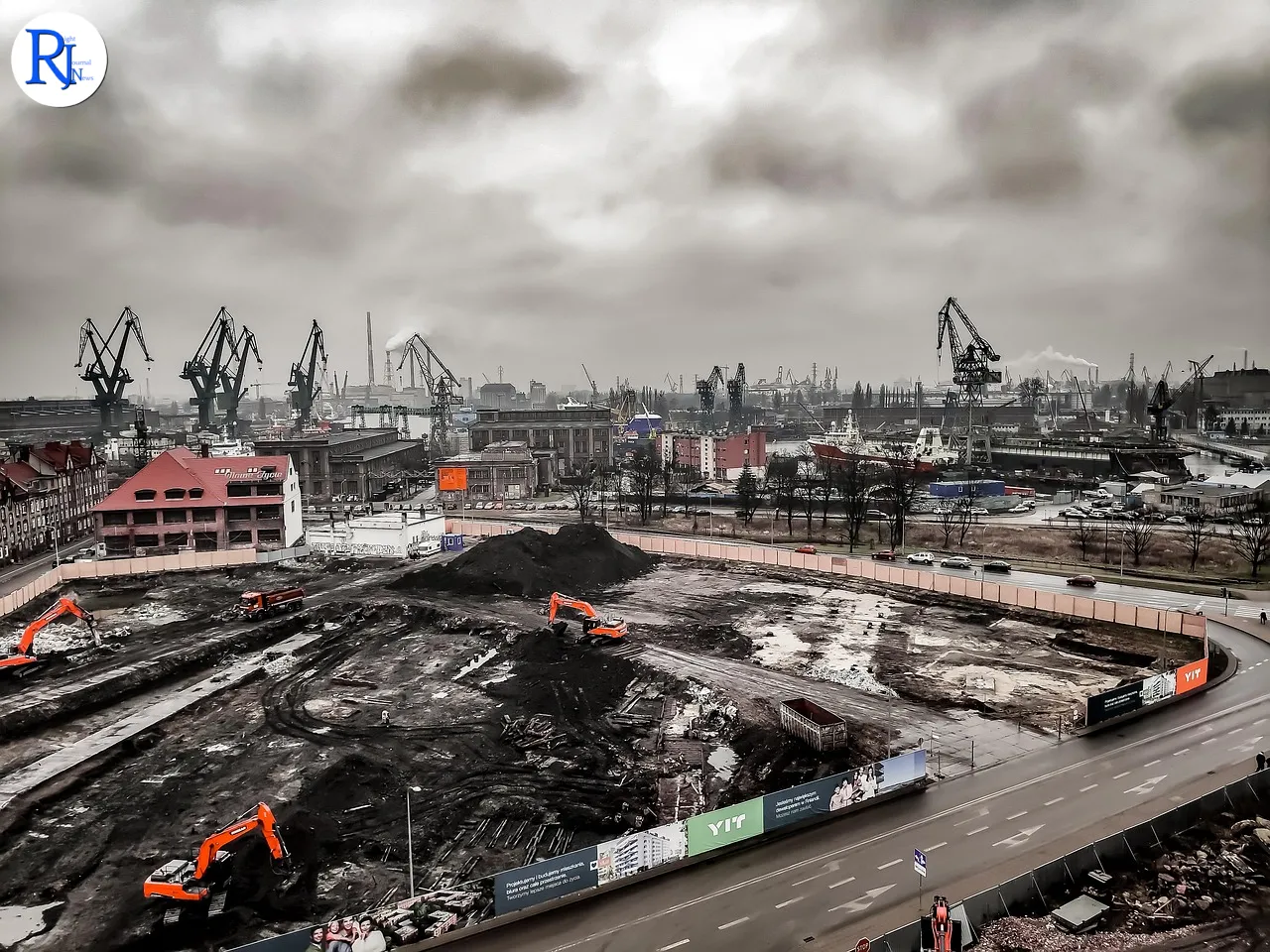Defence officials have drawn up a shortlist of disused oil refineries and chemical plants across the UK as potential sites for new explosives and ammunition production, in one of the most significant rearmament moves in decades. The Ministry of Defence aims to build at least six munitions factories under a £6bn programme to expand Britain’s stockpiles and strengthen supply lines amid a NATO-wide push to boost industrial capacity. Sites under consideration include locations in Grangemouth, Southampton and Teesside, areas with a long industrial heritage and ready access to skilled labour and transport links. The plan reflects a broader effort to retool the defence base for sustained demand, while making use of brownfield land that can support heavy industry with less new build. Officials say the goal centres on resilience and speed, with production scaled to meet sustained needs rather than short-term surges.
The identification of potential sites emerged on Tuesday 18 November 2025 in the UK, as part of ongoing work by the Ministry of Defence to expand munitions output and secure domestic supply chains.

Why the MoD is Turning to Disused Industrial Sites
The Ministry of Defence has scoured the UK for suitable locations that already have industrial footprints, power capacity and transport links. Disused refineries and chemical plants often provide those assets. Many also sit on brownfield land, which can reduce the need for new greenfield development. By repurposing existing infrastructure, the MoD can shorten construction timelines and reduce costs linked to utilities and access, while meeting strict safety and environmental rules.
Choosing former heavy-industry sites also aligns with broader national priorities on energy, logistics and planning. Locations such as Grangemouth, Southampton and Teesside lie near ports, rail hubs and established industrial zones. Those advantages can help move raw materials in and finished munitions out more efficiently, and can simplify coordination with supply chains that serve allied countries. The focus remains on building capacity quickly and safely to meet current and foreseeable demand.
Inside the £6bn Munitions Programme
The £6bn investment aims to deliver at least six new munitions factories, with production lines geared to explosives and ammunition. The scale reflects a strategic shift from peacetime procurement to higher and steadier output, as allies adapt to prolonged strain on stockpiles. Officials have identified at least a dozen potential sites to enable flexibility on location and sequencing, and to allow for phased delivery as planning, safety and community consultations advance.
The programme sits within a NATO-wide rearmament push to strengthen the industrial base after years of underinvestment in ammunition manufacturing capacity. Converting unused industrial sites gives planners options to expand lines or add new ones if demand grows. The approach also supports redundant capacity, so the system can keep working if one plant faces a disruption. That resilience underpins the logic of a multi-site strategy rather than a single complex.
Communities in Focus: Grangemouth, Southampton and Teesside
Grangemouth, Southampton and Teesside stand out because of their industrial history and workforce skills. Each area has hosted energy or chemical production, which often requires disciplines similar to those used in explosives manufacturing, including handling hazardous materials, maintaining high safety standards and operating complex plant. Those strengths can help new facilities integrate into local economies and draw on existing training pipelines.
Local leaders and residents will expect clear information on safety, jobs and environmental safeguards. Defence planning typically includes community engagement during the design and permitting phases. In areas that have seen industrial decline, new investment can support skilled employment and wider regeneration. However, any proposal will need to address concerns about risk management, transport impacts and remediation of legacy contamination on brownfield sites before construction begins.
Safety, Environmental Checks and Regulatory Hurdles
Explosives and ammunition facilities must meet rigorous standards enforced by UK regulators. Sites that handle hazardous substances fall under regimes such as the Control of Major Accident Hazards (COMAH), overseen by the Health and Safety Executive and environment agencies. Operators must submit detailed risk assessments, emergency plans and design features that prevent, control and mitigate incidents. Local planning authorities will also require environmental impact assessments and public consultation.
Disused industrial land can present legacy challenges, including soil contamination and ageing infrastructure. Remediation plans must meet modern environmental rules before any new production starts. Developers also need to design secure storage, blast protection, fire suppression, and waste management systems that conform to current standards. The regulatory path adds time and cost, but it also ensures robust oversight of plants that handle energetic materials.
Timelines, Procurement and Delivery Risks
Officials have not announced construction timelines for individual sites. The identification of at least a dozen candidates for at least six factories suggests a staged approach, allowing the MoD to move on locations that clear regulatory and community thresholds first. Forward orders, long-term contracts and multi-year budgets will shape delivery schedules, because munitions supply chains depend on predictable demand to scale up production of key inputs.
Capacity building relies on specialist equipment, trained staff and reliable raw materials. Bottlenecks could arise in everything from chemical precursors to machine tools. The MoD’s plan to use existing industrial footprints can reduce some delays by leveraging power connections, access roads and port or rail links. However, lead times for critical components and safety approvals will still drive the pace. Robust planning and contingency measures will be essential to meet output targets.
A NATO-Wide Rearmament Push
The UK effort forms part of a wider allied push to rebuild stockpiles and raise production, reflecting lessons from recent conflicts. NATO members have focused on securing supply chains for basic munitions as well as more complex systems. The alliance has urged sustained orders to give industry confidence to invest in new plant and equipment. Britain’s plan to add multiple munitions sites aligns with that strategy, increasing redundancy and reducing single-point failures.
Allied cooperation also covers standards, interoperability and logistics. While each nation expands its domestic capacity, coordination helps match production to shared needs and avoids duplication. Britain’s geographical position, industrial base and transport links position it as a significant contributor to Europe’s munitions supply. The choice to prioritise brownfield industrial areas could support faster integration into allied supply routes.
Jobs, Skills and the Regional Economy
New munitions plants would create roles across engineering, maintenance, quality assurance, logistics and safety. They would also support indirect jobs in construction, services and local supply chains. Training and apprenticeships play a central role in staffing such facilities, given the need for specialist skills in process control, materials handling and compliance. Regions with existing industrial training networks may be able to scale up more quickly.
Long-term contracts can anchor local economies, but only if developers manage risks and maintain high standards. Community trust will hinge on transparent safety plans and clear environmental commitments. If the programme proceeds at pace, it could help reverse some of the decline in heavy industry and strengthen Britain’s strategic autonomy in critical supplies. The balance between speed, safety and community consent will shape its success.
The Ministry of Defence’s plan to build at least six new munitions factories through a £6bn investment marks a decisive step to rebuild capacity at speed and scale. By prioritising disused refineries and chemical plants, officials aim to leverage existing infrastructure, reduce early-stage risks and bring production online sooner. Communities in Grangemouth, Southampton and Teesside will watch closely as planning, safety assessments and consultations move forward. The outcome will influence jobs, skills and local regeneration, while determining how quickly the UK can add resilient supply to NATO’s broader rearmament effort. If regulators, industry and communities align, Britain could secure a stronger domestic munitions base and a more reliable flow of supplies for years ahead.

